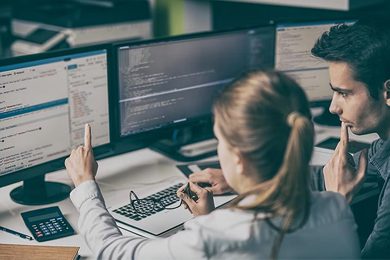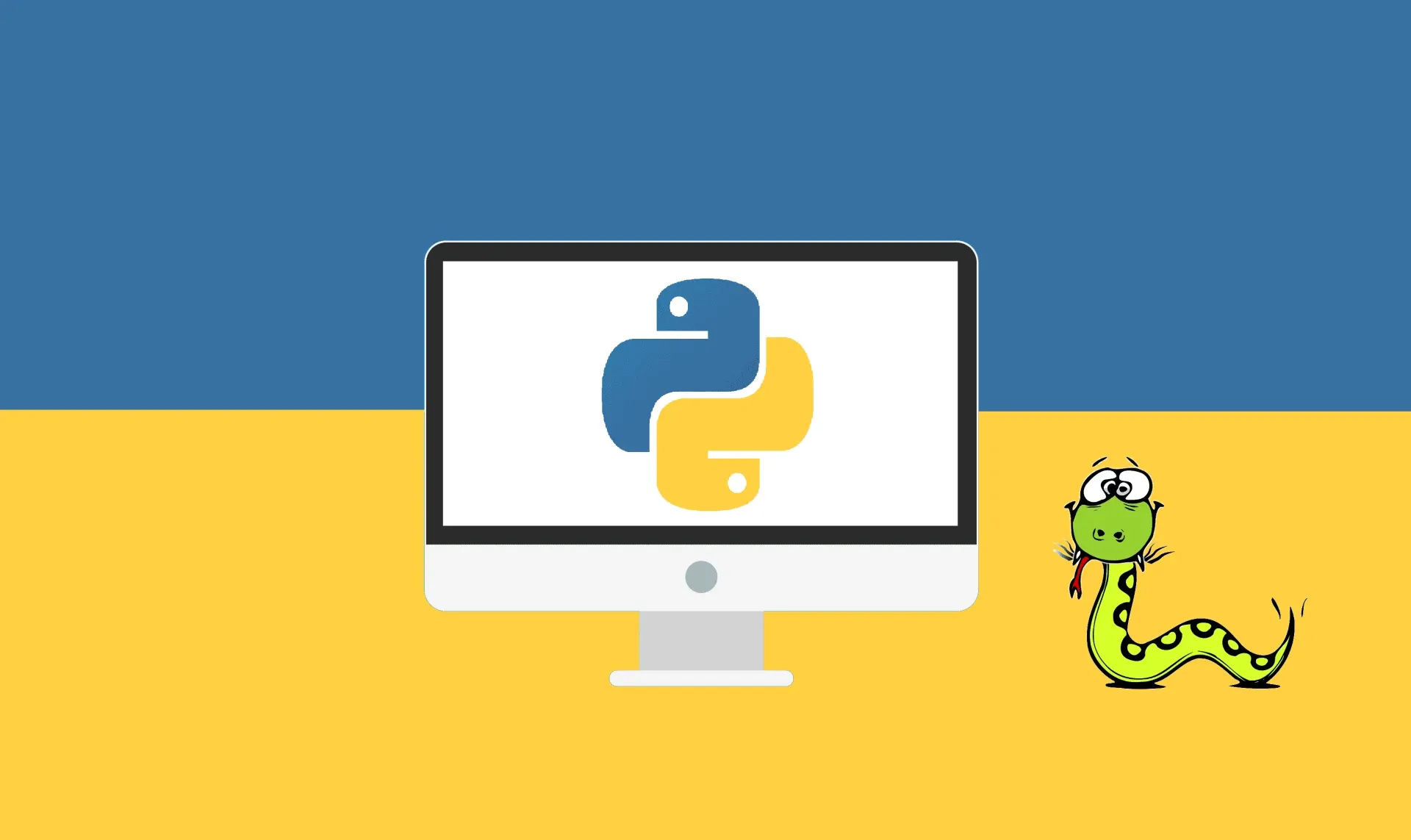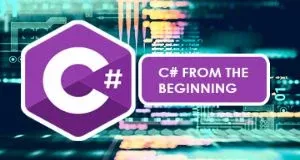This plan includes
- Limited free courses access
- Play & Pause Course Videos
- Video Recorded Lectures
- Learn on Mobile/PC/Tablet
- Quizzes and Real Projects
- Lifetime Course Certificate
- Email & Chat Support
What you'll learn?
- Learn the new Qml 3
- Learn Python native threading
- Qt Signals and Slots in Qml 3
- Learn how to build a wheel (.whl) for PyPi
- Design an app according to a UI/UX design prototype
- Build GUI Applications with Python
- Bundle an app into a .exe, .dmg, etc file
Course Overview
NB: CERTAIN VIDEOS MAY HAVE BAD SOUND
The reason I got into python, I wanted to be a software engineer, I had just built a chat app in PHP and JQuery and a girl asked me if it could run on phone. I responded yes, but I knew that would only be possible using help using non-native means. I wanted native builds, not some complex framework which will only allow me to make a web app whiles I could use the time to study a full fledge programming language. There were others like making a web view app, I didn't like the Idea because there would definetely be setbacks. And I also wanted to be a software engineer or developer, I had built two almost identical CMSs with PHP and I felt I was ready to move into the software development space.
So I made up my mind to go straight into software development, what language should I use? I turned to Google, and Google made it clear that I should turn to python.
The exact thing they did was, they mentioned two things:
1. It is easier to learn and,
2. Some modern applications are built with it. What application? Blender3d. I knew blender, it is a beautiful 3d software.
So I got into python because I wanted to build softwares with it.
Today most python programmers actually want to build web apps, python has been so popular, its power is been used to almost overthrow PHP. Personally I don't like it for two reasons:
1. I love PHP, it made me feel like a programmer, more than JavaScript ever did.
2. Python is capable of a lot more, that is not its preserve. Its domain is in the software development world.
The many python developers should be building softwares with it, not web apps. Web apps has many alternatives, but in the software developement space python is almost alone when it comes to learnability, readability and availability. Even on Android we are leaking there soon we will be so there.
I hope you take my humble advice and study software development with python. It is awesome. This course is focused on that. Enjoy lets go.
Pre-requisites
- Knowledge in basic python programming
Target Audience
- Python developers
Curriculum 94 Lectures 09:35:47
Section 1 : Introduction
- Lecture 2 :
- Introduction
- Lecture 3 :
- Qt's preference of Qml
- Lecture 4 :
- Comparisons between QtWidgets and Qml
Section 2 : Installation
- Lecture 1 :
- Anaconda
- Lecture 2 :
- Fix, if python is not on path
- Lecture 3 :
- Config Pip if need be
- Lecture 4 :
- PyQt5
- Lecture 5 :
- Ninja-Preview
- Lecture 6 :
- Ninja-Preview via pip
- Lecture 7 :
- Download Qt
- Lecture 8 :
- Install PyInstaller
- Lecture 9 :
- Install Twine
- Lecture 10 :
- Install an ico converter
Section 3 : The Path
- Lecture 1 :
- Front end first
Section 4 : Transition to intermediate
- Lecture 1 :
- Declaring star(*) function parameters
- Lecture 2 :
- Decorators
Section 5 : Hands on PyQt
- Lecture 1 :
- Create project files
- Lecture 2 :
- Script the python file
- Lecture 3 :
- Script the qml file
- Lecture 4 :
- Run the python file
- Lecture 5 :
- Add text "Hello World"
- Lecture 6 :
- Lets get started
Section 6 : The basics
- Lecture 1 :
- First Window
- Lecture 2 :
- Window flags
- Lecture 3 :
- Rectangle
- Lecture 4 :
- Property
- Lecture 5 :
- Id
- Lecture 6 :
- Anchors
- Lecture 7 :
- Text
- Lecture 8 :
- Label
- Lecture 9 :
- Image
- Lecture 10 :
- Component
Section 7 : The Layouts
- Lecture 1 :
- Layouts Introduction
- Lecture 2 :
- RowLayouts
- Lecture 3 :
- Column Layouts
- Lecture 4 :
- Grid Layout
- Lecture 5 :
- Stack Layout
- Lecture 6 :
- Custom type
Section 8 : The Views
- Lecture 1 :
- List View
- Lecture 2 :
- List Model
- Lecture 3 :
- Grid View
- Lecture 4 :
- Stack View
- Lecture 5 :
- Swipe View
Section 9 : The Control Types
- Lecture 1 :
- Buttons
- Lecture 2 :
- Text Field
- Lecture 3 :
- Dial
- Lecture 4 :
- How to customize controls
Section 10 : Communicate
- Lecture 1 :
- Signals and Slots (Qml 2)
- Lecture 2 :
- Signals and Slots 2 (Qml 2)
- Lecture 3 :
- Threading
Section 11 : Resources
- Lecture 1 :
- Design a qml UI again
- Lecture 2 :
- The RCC
Section 12 : Build
- Lecture 1 :
- Build the app
- Lecture 2 :
- Build the installer
Section 13 : PyPI | Make a python library
- Lecture 1 :
- How are folders structured
- Lecture 2 :
- How files are structured
- Lecture 3 :
- Basic build with minimal setup parameters
- Lecture 4 :
- More on setup parameters
- Lecture 5 :
- Make several files for different operating systems
Section 14 : Project for Qt | Calculator based partly on Android's Calculator
- Lecture 1 :
- Create project files
- Lecture 2 :
- Add import statements
- Lecture 3 :
- Add the first column layout
- Lecture 4 :
- Add a border to the screen
- Lecture 5 :
- Add a rect for the small size
- Lecture 6 :
- Add a rect for the full size
- Lecture 7 :
- Add a grid layout to the small size
- Lecture 8 :
- Customise the button
- Lecture 9 :
- Put the customised button in a seperate qml file
- Lecture 10 :
- Duplicate twenty-three times
- Lecture 11 :
- Change text and background colors of some duplicates
- Lecture 12 :
- Put in the Glyphs
- Lecture 13 :
- Change color
- Lecture 14 :
- Add a rowlayout to full screen's rectangle
- Lecture 15 :
- Put in the gridlayout for the functions rectangle
- Lecture 16 :
- Put in the equal sign
- Lecture 17 :
- Put in the grid layout and buttons
- Lecture 18 :
- Put in the Column layout and Rectangle
- Lecture 19 :
- Put in the Label and the Flickable
- Lecture 20 :
- Duplicate the lable and the flickable
- Lecture 21 :
- Create new signals
- Lecture 22 :
- Add DeleteText signal
- Lecture 23 :
- Script BtnClick signal
- Lecture 24 :
- Create the onUniClick signal handler
- Lecture 25 :
- Make screen to flick
- Lecture 26 :
- Connect to the python
- Lecture 27 :
- Connect to the equal sign signal
- Lecture 28 :
- Create the compute property
- Lecture 29 :
- Return the solutions answer to Qml
- Lecture 30 :
- Improve on solve using Reversed BODMAS
- Lecture 31 :
- Improve on solve
- Lecture 32 :
- Add Percentage functionality
- Lecture 33 :
- Project resources
- Lecture 34 :
- Put in the numbers
Our learners work at
Frequently Asked Questions
How do i access the course after purchase?
It's simple. When you sign up, you'll immediately have unlimited viewing of thousands of expert courses, paths to guide your learning, tools to measure your skills and hands-on resources like exercise files. There’s no limit on what you can learn and you can cancel at any time.Are these video based online self-learning courses?
Yes. All of the courses comes with online video based lectures created by certified instructors. Instructors have crafted these courses with a blend of high quality interactive videos, lectures, quizzes & real world projects to give you an indepth knowledge about the topic.Can i play & pause the course as per my convenience?
Yes absolutely & thats one of the advantage of self-paced courses. You can anytime pause or resume the course & come back & forth from one lecture to another lecture, play the videos mulitple times & so on.How do i contact the instructor for any doubts or questions?
Most of these courses have general questions & answers already covered within the course lectures. However, if you need any further help from the instructor, you can use the inbuilt Chat with Instructor option to send a message to an instructor & they will reply you within 24 hours. You can ask as many questions as you want.Do i need a pc to access the course or can i do it on mobile & tablet as well?
Brilliant question? Isn't it? You can access the courses on any device like PC, Mobile, Tablet & even on a smart tv. For mobile & a tablet you can download the Learnfly android or an iOS app. If mobile app is not available in your country, you can access the course directly by visting our website, its fully mobile friendly.Do i get any certificate for the courses?
Yes. Once you complete any course on our platform along with provided assessments by the instructor, you will be eligble to get certificate of course completion.
For how long can i access my course on the platform?
You require an active subscription to access courses on our platform. If your subscription is active, you can access any course on our platform with no restrictions.Is there any free trial?
Currently, we do not offer any free trial.Can i cancel anytime?
Yes, you can cancel your subscription at any time. Your subscription will auto-renew until you cancel, but why would you want to?



 Tech & IT
Tech & IT
 Business
Business
 Coding & Developer
Coding & Developer
 Finance & Accounting
Finance & Accounting
 Academics
Academics
 Office Applications
Office Applications
 Art & Design
Art & Design
 Marketing
Marketing
 Health & Wellness
Health & Wellness
 Sounds & Music
Sounds & Music
 Lifestyle
Lifestyle
 Photography
Photography


















